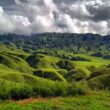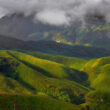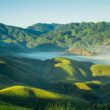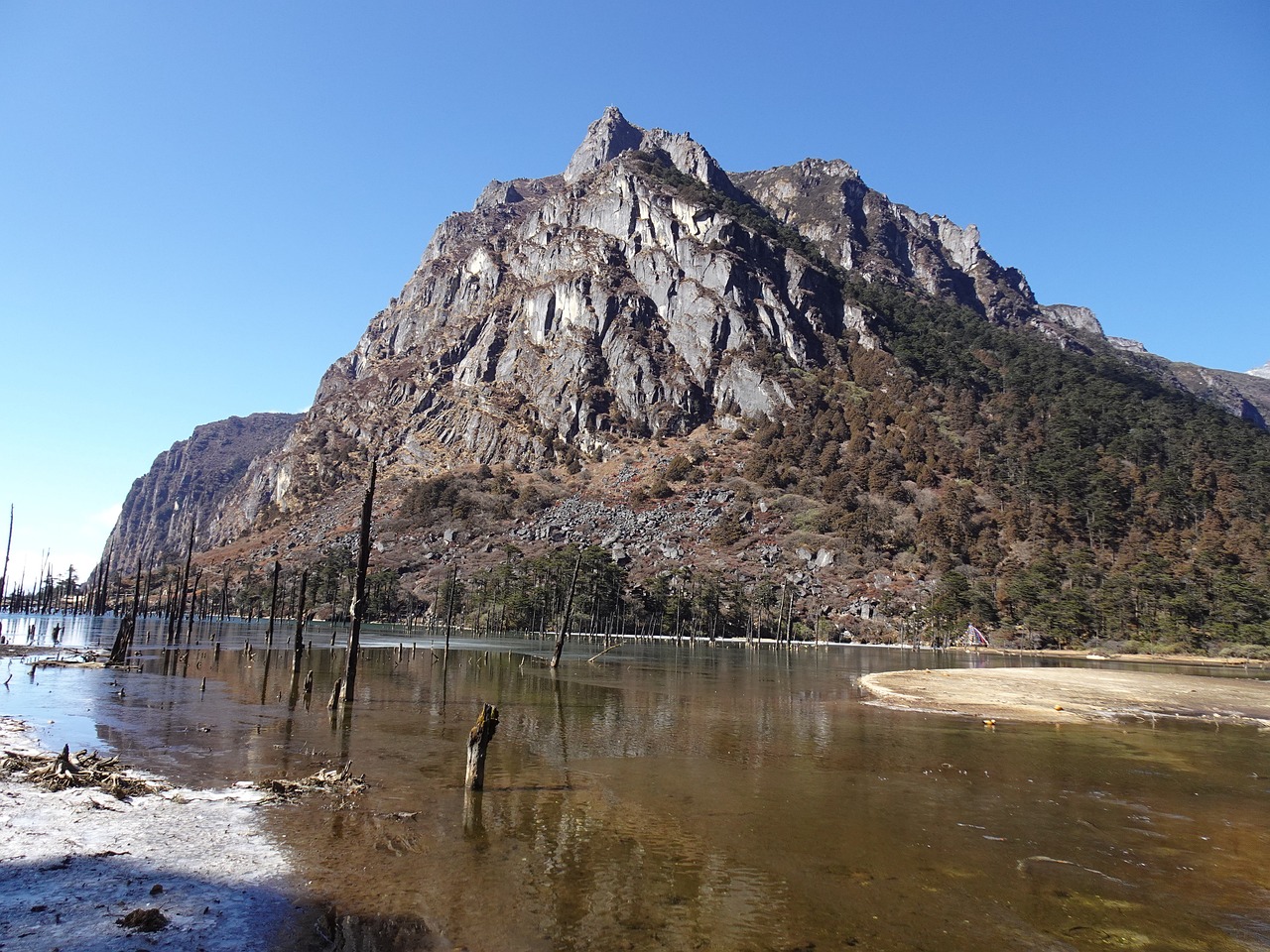Tawang Monastery, also known as Tawang Gompa, is a Buddhist monastery located in the Indian state of Arunachal Pradesh. The monastery is the largest in India and the second largest in the world after the Potala Palace in Lhasa, Tibet. It is considered to be one of the most sacred places for the Mahayana sect of Buddhism.
The monastery was built in the 17th century by Merak Lama Lodre Gyatso, a monk of the Gelugpa sect of Buddhism. The monastery is located in the Tawang Valley, surrounded by the majestic Himalayan mountains, and is at an altitude of 10,000 feet above sea level.
The Tawang Monastery has a rich history and cultural significance. It is not just a religious place but also a place of great historical and cultural importance. The monastery has many ancient scriptures, including the Kangyur, which is a collection of the teachings of the Buddha, and the Tengyur, which is a collection of commentaries on the teachings of the Buddha. The monastery also houses a library of Buddhist texts and artifacts, including thangkas, statues, and murals.
The Tawang Monastery is also a popular tourist destination, attracting visitors from all over the world. The main attraction of the monastery is the annual Tawang Festival, which is celebrated in the month of November. During this festival, the local people perform traditional dances, music, and other cultural activities.
In addition to its religious and cultural significance, the Tawang Monastery is also a major center for the study of Buddhism. The monastery has a school where young monks are trained in the study of Buddhism and other religious texts. The school also provides education to the local people and is a major source of education in the region.
The Tawang Monastery is also a UNESCO World Heritage Site. This distinction recognizes the importance of the monastery as a cultural and religious site. It is also a testament to the rich heritage of the Tawang Valley and the Mahayana sect of Buddhism.
In conclusion, Tawang Monastery is a must-visit destination for anyone interested in Buddhism, culture, and history. With its beautiful location, rich history, and cultural significance, it is a place that should not be missed. It’s a great place to explore and learn about Buddhism and the Mahayana sect. And it’s a perfect place to get a sense of the way of life of the people of the region.
History of Tawang Monastery
The Tawang Monastery, also known as Tawang Gompa, is a Buddhist monastery located in the Indian state of Arunachal Pradesh. The monastery is the largest in India and the second largest in the world after the Potala Palace in Lhasa, Tibet. It is considered to be one of the most sacred places for the Mahayana sect of Buddhism.
The monastery was built in the 17th century by Merak Lama Lodre Gyatso, a monk of the Gelugpa sect of Buddhism. The monastery is located in the Tawang Valley, surrounded by the majestic Himalayan mountains, and is at an altitude of 10,000 feet above sea level.
The history of Tawang Monastery is closely tied to the history of Buddhism in the region. Buddhism was first introduced to the Tawang area in the 7th century by the Indian monk, Rinpoche (also known as Padmasambhava). He visited the region to spread Buddhism and is said to have subdued the local demons and established many monasteries.
In the 17th century, Merak Lama Lodre Gyatso, a monk of the Gelugpa sect of Buddhism, came to the Tawang Valley and began construction on the Tawang Monastery. The monastery was completed in 1681 and became an important center for the study and practice of Buddhism in the region.
Over the centuries, the Tawang Monastery has played an important role in the cultural and religious life of the region. It has been a center for the study and preservation of Buddhist texts and artifacts and has been a major source of education for the local people.
During the British colonial period, the Tawang Monastery was affected by political and territorial disputes between the British and Tibetan governments. In 1914, the British annexed the Tawang region and the monastery was placed under British control. However, after India’s independence in 1947, the Tawang region was returned to India and the monastery was placed under Indian control.
In recent years, Tawang Monastery has been recognized as a UNESCO World Heritage Site, in recognition of its cultural and religious significance. The monastery continues to be an important center for the study and practice of Buddhism and attracts visitors from all over the world.
In summary, Tawang Monastery has a rich history spanning centuries and is closely tied to the history of Buddhism in the region. It was built in the 17th century and has played an important role in the cultural and religious life of the region, it has been a center for the study and preservation of Buddhist texts and artifacts and also a major source of education for the local people. Today, it continues to be an important site for Buddhism and a UNESCO World Heritage Site.
Things to do at Tawang Monastery
Tawang Monastery, also known as Tawang Gompa, is a popular tourist destination located in the Indian state of Arunachal Pradesh. The monastery is the largest in India and the second largest in the world after the Potala Palace in Lhasa, Tibet. The monastery is a great place to explore and learn about Buddhism and the Mahayana sect. And it’s a perfect place to get a sense of the way of life of the people of the region.
Here are some things to do when visiting the Monastery:
- Explore the Monastery Complex: The Monastery is a large complex that is home to several temples, stupas, and other religious structures. Visitors can take a tour of the complex and explore the various buildings and artifacts that are housed within it.
- Visit the Library: The Tawang Monastery has a library that houses a collection of ancient scriptures and other religious texts. Visitors can explore the library and learn about the history and teachings of Buddhism.
- Attend a Prayer Service: Visitors can attend a prayer service at the Tawang Monastery and experience the daily life of the monks who reside there.
- Visit the Museum: The Monastery has a museum that showcases the history and culture of the region. Visitors can learn about the history of Buddhism in the area and see artifacts and relics from the monastery’s past.
- Attend the Tawang Festival: The Tawang Festival is an annual event that is celebrated in the month of November. Visitors can attend the festival and see traditional dances, music, and other cultural activities.
- Take a Hike: The Monastery is surrounded by the majestic Himalayan mountains. Visitors can take a hike and explore the beautiful natural landscape of the region.
- Visit the War Memorial: Tawang Monastery is also home to a War Memorial dedicated to the soldiers of the Indian Army who lost their lives in the 1962 Sino-Indian War.
- Visit the Urgyelling Monastery: Urgyelling Monastery is another popular Buddhist Monastery located nearby Monastery and is a great place to visit.
In conclusion, Tawang Monastery offers a variety of activities for visitors to experience, from exploring the rich cultural and religious heritage of the area to enjoying the natural beauty of the surrounding Himalayas and also the opportunity to immerse in the local festivals and customs.
Places to visit Tawang Monastery
Tawang Monastery, also known as Tawang Gompa, is located in the Indian state of Arunachal Pradesh. The monastery is the largest in India and the second largest in the world after the Potala Palace in Lhasa, Tibet. It is situated in the Tawang district, surrounded by the beautiful Himalayan Mountains, and is a popular tourist destination. Here are a few nearby places to visit when you are at Tawang Monastery:
- Sela Pass: Sela Pass is a high-altitude mountain pass located at an altitude of 13,700 feet above sea level. It is located around 50 km from Tawang Monastery and offers beautiful views of the Himalayas.
- Nuranang Waterfalls: Nuranang Waterfalls is a beautiful waterfall located in the Tawang district, around 60 km from the Monastery. It is a popular spot for visitors to take a dip in the cool waters and enjoy the natural beauty of the region.
- Tawang War Memorial: Tawang War Memorial is a memorial dedicated to the soldiers of the Indian Army who lost their lives in the 1962 Sino-Indian War. It is located around 4 km from the Monastery and is a must-visit place for history enthusiasts.
- Jang Waterfall: Jang waterfall is a beautiful waterfall located in the Tawang district, around 60 km from the Monastery. It is a popular spot for visitors to take a dip in the cool waters and enjoy the natural beauty of the region.
- Tawang Craft Center: Tawang Craft Center is a great place to see the traditional handicrafts of the region. Visitors can see the intricate carvings and craftsmanship of the local artisans.
- Urgyelling Monastery: Urgyelling Monastery is another popular Buddhist Monastery located nearby the Monastery and is a great place to visit.
- PT Tso Lake: PT Tso Lake is a beautiful lake located around 12 km from Tawang Monastery. It is a popular spot for visitors to enjoy the natural beauty of the region.
- Nuranang Power House: Nuranang Power House is a hydroelectric power plant located in the Tawang district, around 60 km from the Monastery. It is a popular spot for visitors to see the working of the power plant and enjoy the natural beauty of the region.
In conclusion, the Monastery is surrounded by many beautiful places to visit and the area offers a great opportunity to immerse in the natural beauty of the Himalayan Mountains and also the culture and traditions of the local people.
Similar Articles
Best time to visit Tawang Monastery
The best time to visit the Monastery is during the months of March to June and September to November.
During the months of March to June, the weather is pleasant and the temperature ranges between 10-20 degrees Celsius. This is the perfect time to visit the Monastery as well as the nearby places as the weather is perfect for sightseeing and trekking. The Monastery and the surrounding areas are covered in lush greenery during this time, making it a visually stunning experience.
September to November is also a good time to visit the Monastery as the weather is clear and the temperature ranges between 5-15 degrees Celsius. This is also the time when the famous Tawang Festival is held, which is a great opportunity to immerse in the local culture and customs.
It’s worth noting that the Monastery is located in a high-altitude area and the temperature can drop below freezing point during the night even during the summer months, so it’s important to bring warm clothing. Also, it is not recommended to visit during the monsoon season (July-August) as the heavy rainfall can make the roads slippery and the visibility is poor.
How To Reach Tawang Monastery
The Monastery is located in the Indian state of Arunachal Pradesh and can be reached by various means of transportation. Here are a few ways to reach the Monastery:
- By Air: The nearest airport to Monastery is Tezpur airport in Assam, which is about 334 km away. From Tezpur airport, one can hire a taxi or take a bus to reach Tawang.
- By Road: Monastery is well connected by road to major cities in the region. Buses and taxis are available from Guwahati, Tezpur, and other major cities in the region.
- By Train: The nearest railway station to Tawang Monastery is Tezpur railway station in Assam, which is about 334 km away. From Tezpur railway station, one can hire a taxi or take a bus to reach Tawang.
- By Foot: Monastery is also accessible by foot. Trekkers and hikers can trek through the beautiful Himalayan Mountains to reach the Monastery. This is a popular way to reach Tawang Monastery for those who enjoy adventure and the great outdoors.
It’s worth noting that Tawang Monastery is located in a remote area and the journey can be long and bumpy at times. It’s recommended to plan the trip in advance and to check the road conditions before setting out. Also, it’s important to carry necessary documents like Inner Line Permit and ILP (Inner Line Permit) as it is mandatory for Indian citizens and required for foreigners to enter Arunachal Pradesh.
Frequently Asked Questions About Tawang Monastery
Q. What is the history of Tawang Monastery?
A – Tawang Monastery is one of the oldest and largest Buddhist Monasteries in India. It was built in the 17th century by the Merak Lama Lodre Gyatso and is located in the Tawang district of Arunachal Pradesh. The Monastery holds great historical and cultural significance as it is believed to be the birthplace of the 6th Dalai Lama.
Q. Is Tawang Monastery open to visitors?
A – Yes, Tawang Monastery is open to visitors. The Monastery is open from 6:00 am to 5:00 pm daily.
Q. What should I wear when visiting Tawang Monastery?
A – It’s recommended to dress modestly when visiting Tawang Monastery. Avoid wearing revealing clothing and it’s also important to remove shoes before entering the Monastery.
Q. Is there an entry fee to Tawang Monastery?
A – Yes, there is an entry fee to visit Tawang Monastery. The entry fee is Rs. 10 per person for Indians and Rs. 100 per person for foreigners.
Q. Are there any restrictions on photography at Tawang Monastery?
A – Photography is allowed inside the Monastery but it’s important to be respectful and avoid taking photos of any restricted areas.
Q. Are there any facilities for accommodation near Tawang Monastery?
A – There are several guesthouses and hotels near the Monastery that offer accommodation. It is also possible to stay inside the Monastery in the guesthouse
Q. Is it safe to visit Tawang Monastery?
A – Monastery is located in a remote area, but the area is safe for visitors. The Monastery is a popular tourist destination and it is well-protected by security personnel. However, as with any travel, it’s important to take precautions and to be aware of your surroundings.









